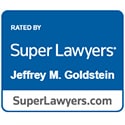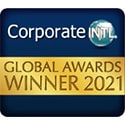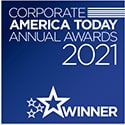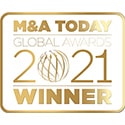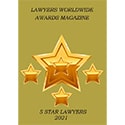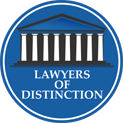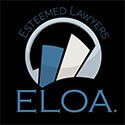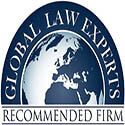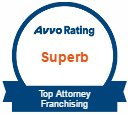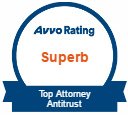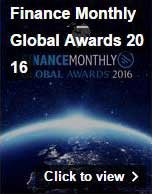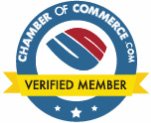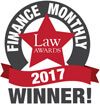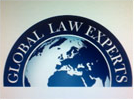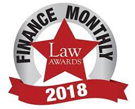HANDICAPPING ANTITRUST AND FRANCHISE LITIGATION DISPUTES
Whether a dispute results in a full trial and appeal, or instead settles at some point earlier in the case, depends on many variables. Jeff Goldstein, who has been practicing for almost 35 years in courts throughout the country, has a recognized aptitude for accurately handicapping business litigation disputes in the antitrust and franchise areas. Goldstein’s talent in this area is bolstered by his unique specialization in law and economics.
Voluntary Exchanges in a Neoclassical Market – Theory
Exchanges or transactions occur in a neoclassical economics model when the buyer values his product or service more than the seller does. Very simply, where a seller of a used Bugatti, for instance, values his car at a minimum of $45,000 and the buyer values it up to a maximum of $95,000, ceteris paribus, an exchange will occur for a purchase price of the car between $45,000 and $95,000, depending on the relative bargaining skills of the parties.
A ‘settlement’ is no different than any other tangible product or service that can be sold for a market price in a free market. So, where the plaintiff accurately values his or her case to be worth $45,000 (where the trial or litigation avoidance is worth an amount to the plaintiff above the minimum expected value of $45,000), and a defendant accurately values his or her case to be worth $95,000 (where the trial or litigation avoidance is worth an amount to the defendant below and up to a maximum value of $95,000), an exchange of the right to litigate (or a settlement) will occur.
Like the buyer and seller of the car, the parties in litigation, if acting rationally, would be willing to buy and sell the ‘right to litigate’ for a price between $45,000 and $95,000. When a case settles, this is equivalent to saying that the ‘right to litigate’ has been sold by the plaintiff to the defendant.
Application: Exchanges in a Litigation Rights Market in a Franchise Dispute – Pre-Trial Settlements (Basic Model)
In general, a settlement agreement is struck between two parties when the plaintiff sells his right to sue on the case to the defendant. To show this, assume that a plaintiff franchisee has been terminated without cause and that this is prohibited under relevant state law. Also assume that the franchisee’s provable damages are $100,000. Assume further that a reliable and accurate litigation handicapper puts the franchisee’s odds at 70% of prevailing and 30% of losing. Last, assume that the total trial and appeal litigation costs would be $25,000.
From the franchisee’s perspective, the simple value of the case is $45,000 (this is the result of .70 multiplied by $100,000, which is $70,000; from this expected judgment of $70,000, litigation costs of $25,000 must be deducted). Accordingly, if the defendant franchisor offered to pay above $45,000 as a settlement, it would generally be acceptable to the plaintiff franchisee.
On the other hand, let’s assume that the franchisor has also found a reliable and accurate litigation handicapper who agrees that the franchisee has a 70% chance of prevailing, and that a trial and appeal will cost $25,000. The simple expected value of the loss (or expected loss) for the franchisor in this hypothetical case would be $95,000 (which is .70 multiplied by the damages of $100,000, or $70,000, plus $25,000 litigation expenses). The franchisor, therefore, generally would be willing to pay an amount less than and up to $95,000 to avoid going through litigation.
Under the above scenario, the franchisee would be willing to sell the right to sue the franchisor for an amount above $45,000 and the franchisor would be willing to buy the right to avoid litigation for less than $95,000. Thus, there is a ‘settlement range’ that exists between $45,000 and $95,000. This is the range within which bargaining will occur and in which the parties, if rational, will settle.
Application: Exchanges in a Litigation Rights Market in a Franchise Dispute – Pre-Trial Settlements (Varying Assumptions of Basic Model)
When certain assumptions from the model above are either removed or modified, the original range of a potential settlement changes; sometimes it narrows; sometimes it increases; and other times it becomes inverted. To show this, we modify seriatim the following three initial assumptions: (1) that the transactions costs of bargaining were zero; (2) that the parties were risk neutral; (3) that both the parties had the identical assessment of the plaintiff’s likelihood of success on winning (and defendant’s likelihood of success on defending); and (4) that the parties were each rational or acted such that they were.
Transaction costs (in this case the costs of reaching a settlement) offset the costs (or gains) achieved by avoiding a trial. Conceptually, where money is expended on settlement it cannot thereafter also be saved by avoiding trial; thus, the settlement range will become smaller. The closer the parties get to trial without settling their case the narrower will be the settlement range. This is consistent with the Coase Theorem in that the larger the transaction costs the less likely an exchange will occur.
When people are risk averse, this will expand the size of the range of settlement. Whereas the plaintiff in the example above was risk neutral and willing to accept in settlement an amount above $45,000, this was not an actual amount, since it was only an expected value, based in part on a probability. In other words, if the case went to trial, it would be higher or lower that the expected value of $45,000. If the plaintiff franchisee is risk averse, he will likely be willing to accept something less than $45,000. Similarly, the defendant franchisor will not actually lose $95,000, since this is an expected value of a hypothesized loss. If the franchisor is risk averse, he would be willing to pay more than $95,000 to avoid the possibility of a loss greater than $95,000.
Whereas in the above model we had assumed that both parties embraced the same probability of success of the plaintiff’s on his claim (70%), we now lift that assumption such that the plaintiff and defendant both arrive at different probabilities of success, such that the plaintiff views his chances of winning as 60% and the defendant views his chances of losing as 80%. For the plaintiff this results in an expected value of $40,000 (which is .6 x $100,000 minus $25,000 of costs). And, for the defendant, this results in an expected value of the loss of $105,000 (which is .80 x $100,000 or $80,000 plus $25,000 litigation costs). This creates a revised settlement range of $65,000 in comparison to the initial settlement range of $50,000.
Further, if the parties’ assessments of their likelihood of prevailing or losing are relatively extreme in opposition to each other, the possibility of settlement may not be theoretically possible. For example, if the plaintiff’s expected gain is $70,000 and the defendant’s expected loss is $30,000, a settlement is not likely to occur as the plaintiff-franchisee values his right to litigate at a minimum of $70,000, and the defendant-franchisor is willing to pay only up to $30,000 to ‘buy’ the plaintiff’s right to sue.
Last, the models above assumed that the decisionmakers (the plaintiff and defendant) were rational or acted as if they were in deciding whether to settle. In fact, individual decisionmakers are limited in their intelligence, expertise and common sense. Further, everyone on occasion makes a mistake. These limitations cause decisionmakers in litigation to err in calculating their cost-benefit analyses regarding settlement. These cognitive distortions and biases cause mistakes in calculating dispute value, dispute outcome and settlement range.
Variables Affecting the Value of a Business Dispute
In the above examples, the differences or asymmetry in views of gain and loss expectations may occur for a myriad reasons including, but not limited to, different views regarding the following: (1) relevant liability standards; (2) correct damages standards; (3) strengths and weaknesses of potential witnesses for both sides; (4) ideology of the judge or arbitrator; (5) strengths or weaknesses of counsel on both sides; (6) parties’ ability to fund litigation; and (7) credibility of the parties and witnesses.
Should You Litigate or Settle Your Dispute?
As discussed above, it is not always easy to obtain an accurate litigation assessment of a business dispute. Indeed, it is impossible to do so without affiliating yourself with an attorney who has a demonstrated expertise in complex litigation around the country. In reaching out to such an expert, remember that litigation is an art form, not a science. The websites of litigators frequently are a window into their psyches – does the lawyer appear creative, innovative, imaginative, inspired, educated, well-read, sophisticated and accomplished? If so, request a consultation with him or her, and you’ll have taken first step in your journey to accurately assess the litigation potential of your business dispute.


